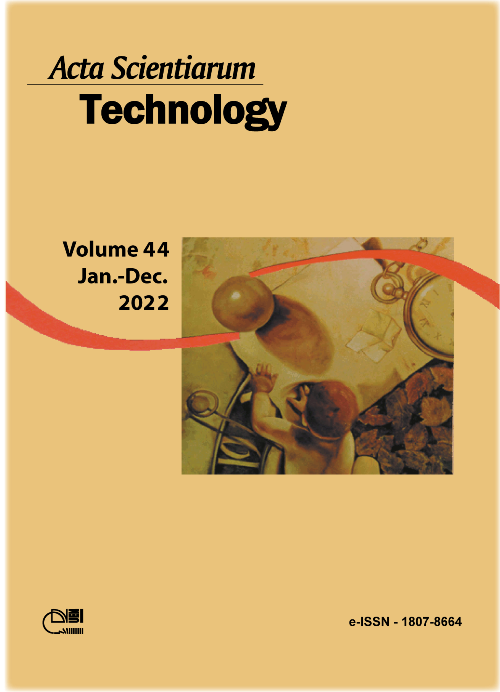Exploratory analysis of bioactive compounds and antioxidant potential of grape (Vitis vinifera) pomace
DOI:
https://doi.org/10.4025/actascitechnol.v44i1.56934Keywords:
Phenolic compounds; antimicrobial activity; winemaking; multivariate analyses; spectroscopy analyses.Abstract
The aim of this study was to explore the profile of bioactive compounds of Merlot grape pomace by different methodologies including phenolic composition by spectrophotometry, chromatography and spectroscopy and its antibacterial activity. Additionally, the correlation between phenolic compounds and antioxidant activity by principal component analyses (PCA) was evaluated. Merlot grape pomace showed different classes of bioactive compounds such as phenolic acids, flavonoids and stilbene with high antioxidant activity according to the DPPH (2.58 ± 0.07 mg mL‑1), autoxidation of system β-carotene/linoleic acid (70.60 ± 0.91%), ABTS (1.22 ± 0.01 mg mL-1) and FRAP (23.83 ± 0.64 µM FeSO4 g-1) assays. The extracts showed minimum inhibitory concentration for gram-positive and gram-negative bacteria with high values for Bacillus cereus (MIC = 12.5 mg mL-1) and Staphylococcus aureus (MIC = 25 mg mL-1), respectively. In addition, fingerprint regions of the phenolic compounds were found by mid-infrared, supporting the results of the chromatographic analyses. Through the PCA, the antioxidant potential assays had high correlation with phenolic composition. Therefore, considering the significant concentrations of the different bioactive compounds found in Merlot grape pomace, it can be inferred that this cheap by-product can be reused by the food industry in the development of new products
Downloads
Downloads
Published
How to Cite
Issue
Section
License
DECLARATION OF ORIGINALITY AND COPYRIGHTS
I Declare that current article is original and has not been submitted for publication, in part or in whole, to any other national or international journal.
The copyrights belong exclusively to the authors. Published content is licensed under Creative Commons Attribution 4.0 (CC BY 4.0) guidelines, which allows sharing (copy and distribution of the material in any medium or format) and adaptation (remix, transform, and build upon the material) for any purpose, even commercially, under the terms of attribution.
Read this link for further information on how to use CC BY 4.0 properly.















8.png)




